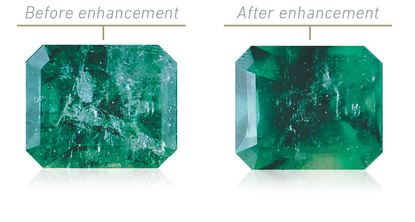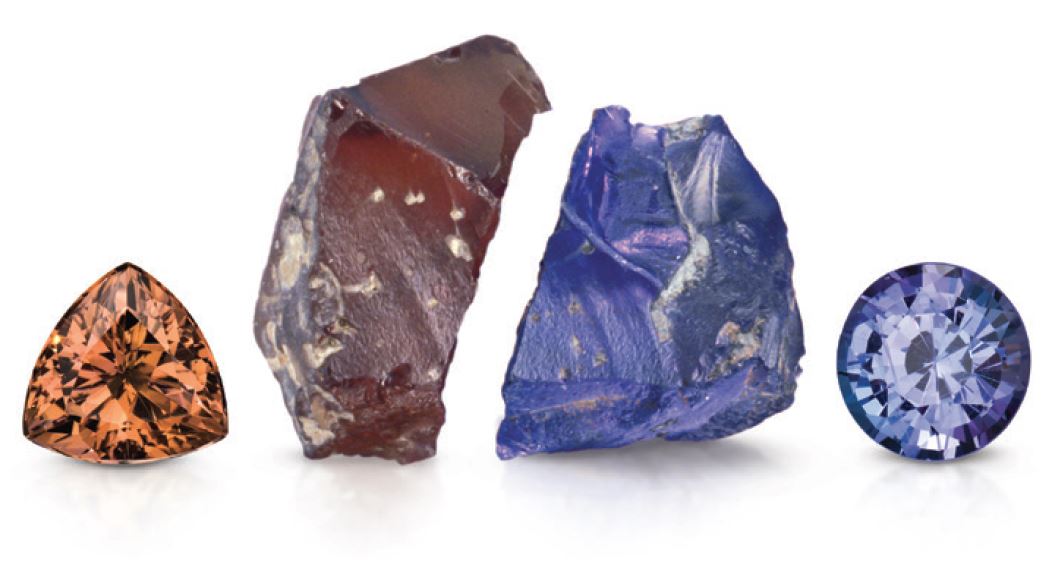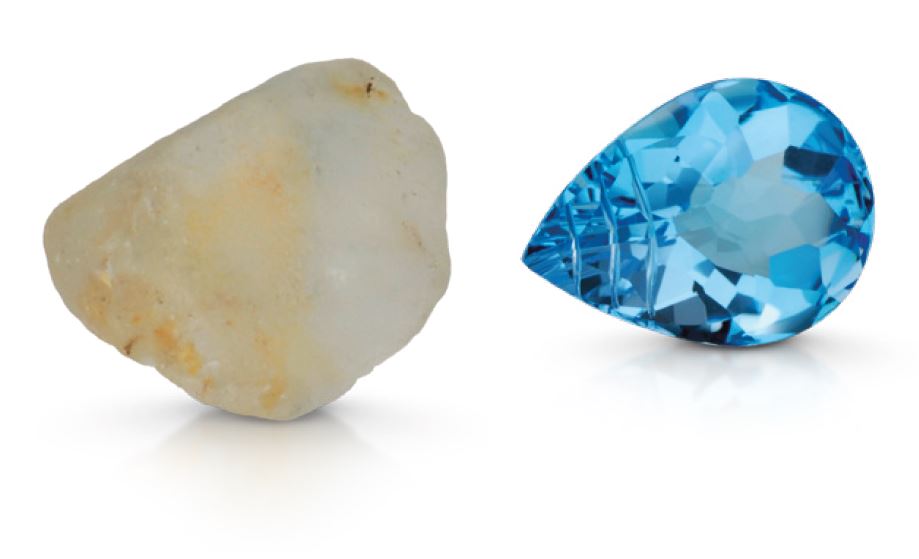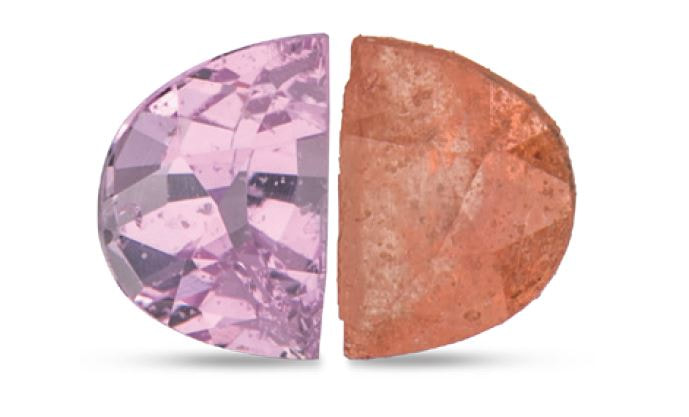Gemstone Treatments
Believed to encourage artistic intuition with the palette to express every mood.
Gemstones are treated by various methods to improve their color, transparency or durability. Treatments have been done for thousands of years, although modern technology has increased the kinds of treatments possible. There is nothing inherently wrong with treatments as long as they are fully disclosed to the buyer.
Different treatment methods are applied depending on the type of gemstone:
Different treatment methods are applied depending on the type of gemstone:
|
Bleaching – a chemical used to alter/reduce a
component of, or the entire color of, a porous gem. Some gemstones are bleached and then dyed, most notably done to jadeite and pearl. Dyeing – introducing colored dyes into porous or fractured gems to change their color. Such fractures are sometimes purposely induced by heating and quench crackling the gem so that an otherwise nonporous material can more readily accept the dye. Fracture or Cavity Filling – filling surface-reaching fractures or cavities with a glass, resin, wax or oil to reduce their visibility and to improve the apparent clarity or durability of gem materials. The filling materials vary from being solids (a glass) to liquids (oils), and in most cases, they are colorless (colored filler materials could be classified as dyes), most notably done to emeralds. Heat Treatment – the exposure of a gem to various
elevated temperatures for the purpose of altering its color and/or clarity, or improving its durability. It is potentially done to many gems but most notably to rubies and sapphires. Left, rough and polished untreated zoisite.
Right, rough and polished heat-treated tanzanite. |
Impregnation – the surface of a porous gemstone
is permeated with a polymer, wax or plastic to give it greater durability and improve its appearance. This treatment is most notably done to jadeite and turquoise. Irradiation – exposure of a gem to an artificial source of radiation to change its color. This is sometimes followed by a heat treatment to further modify the color, most notably done to blue topaz. Left, natural topaz rough.
Right, irradiated polished blue topaz. Lattice Diffusion – the penetration of certain
elements into the atomic lattice of a gemstone during heat treatment, with the objective of changing its color, most notably done to sapphire. Lattice diffusion changed this
pink sapphire to orange While many gemstone treatments can improve
color and clarity, some are not stable and may reduce the value of a stone significantly. Always get a GIA Colored Stone Report to ensure you know the quality of your stone and if it has undergone any detectable treatments. |
All information are courtesy of Gemological Institute of America (GIA). OR DIAMOND are not affiliated with, connected to, or associated with GIA other than selling diamonds and gemstones graded by GIA and have GIA trained staff gemologist and accredited jewelry professional on site.





